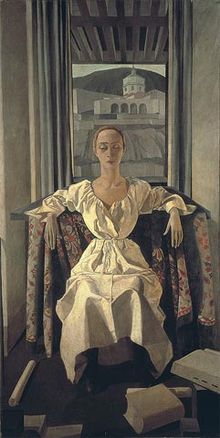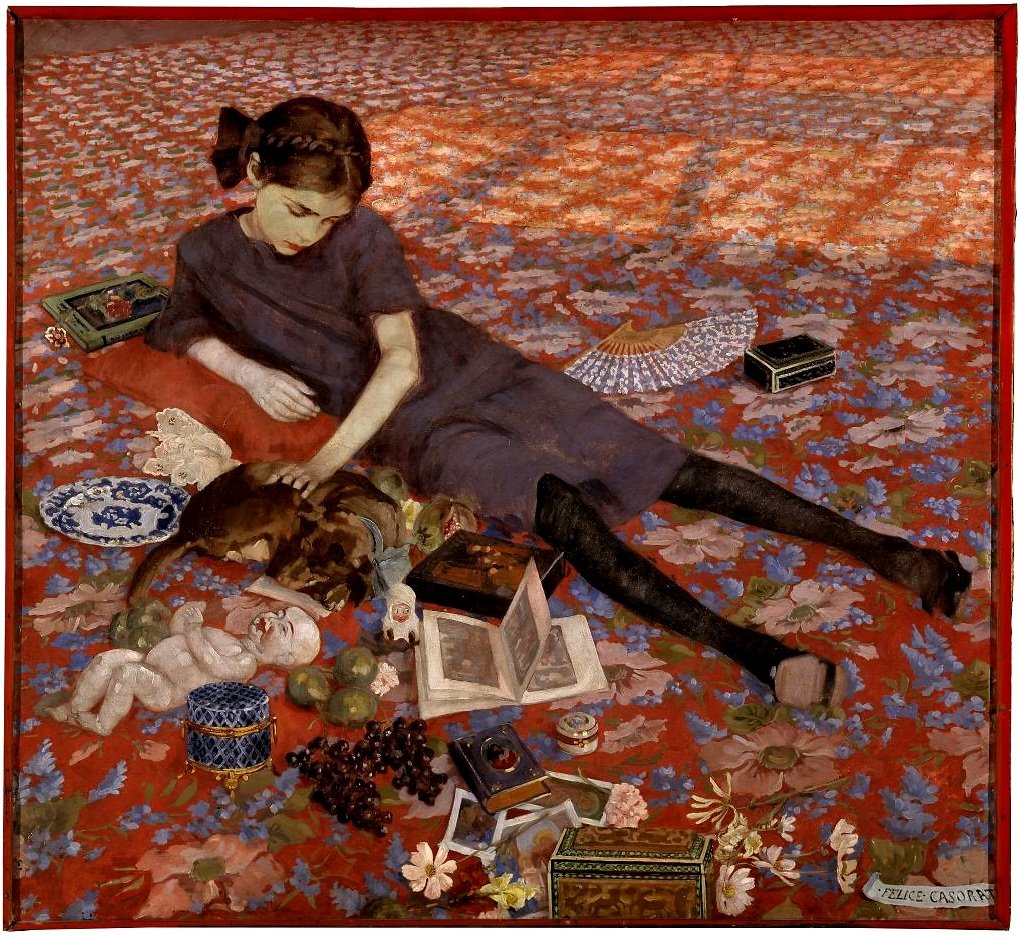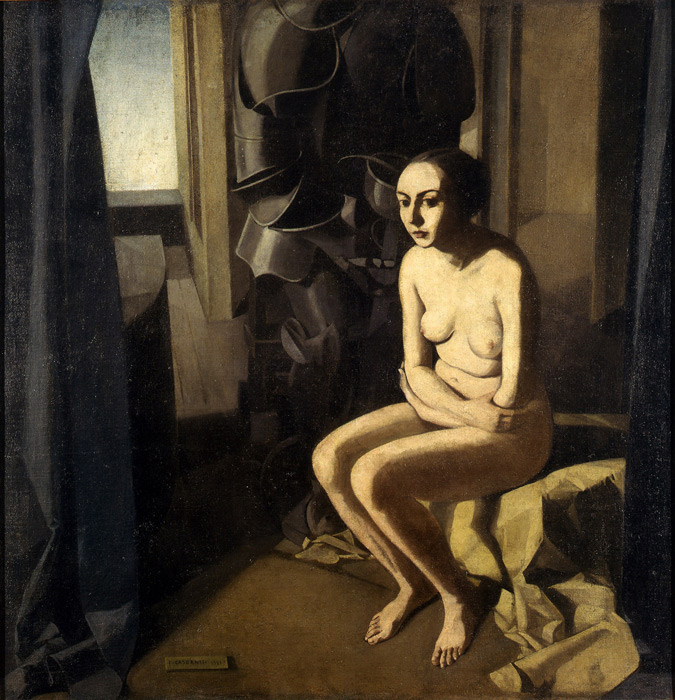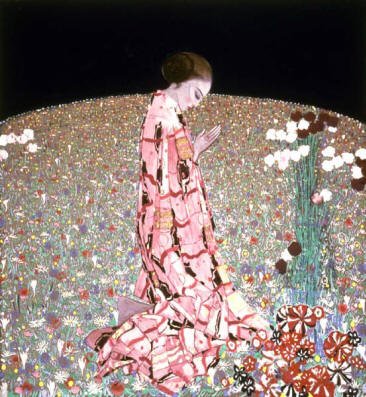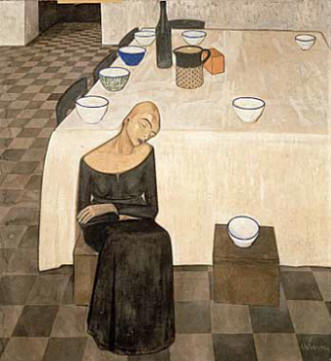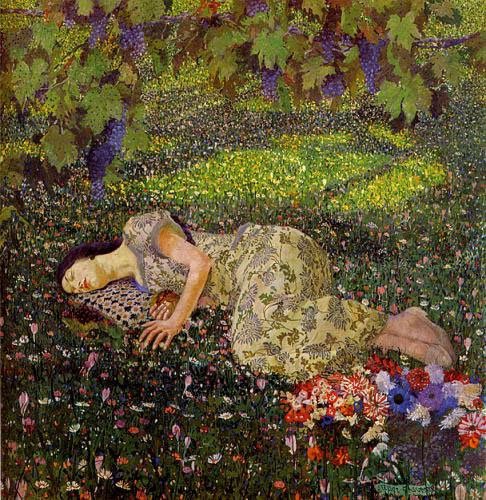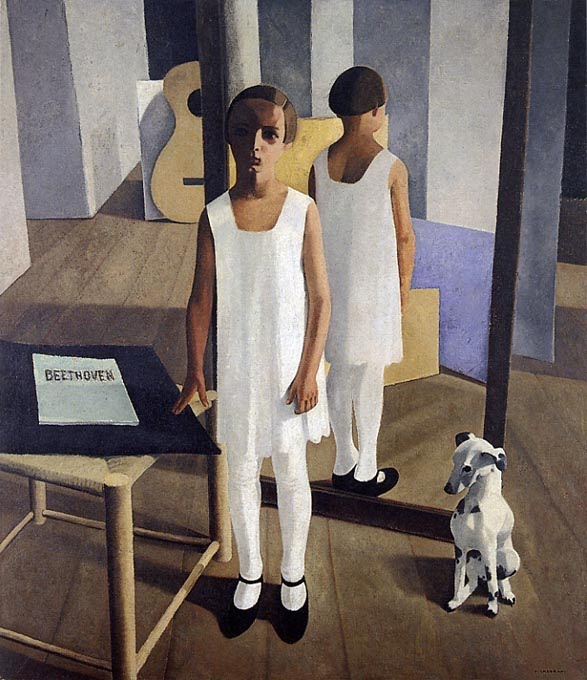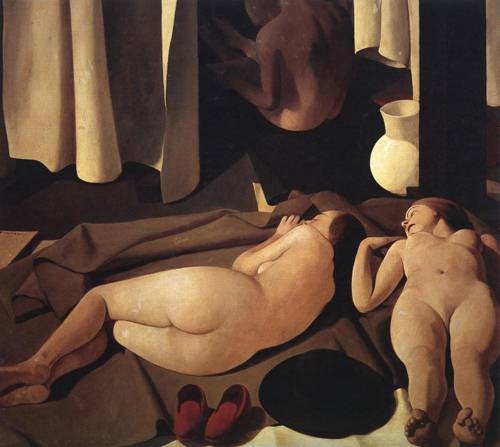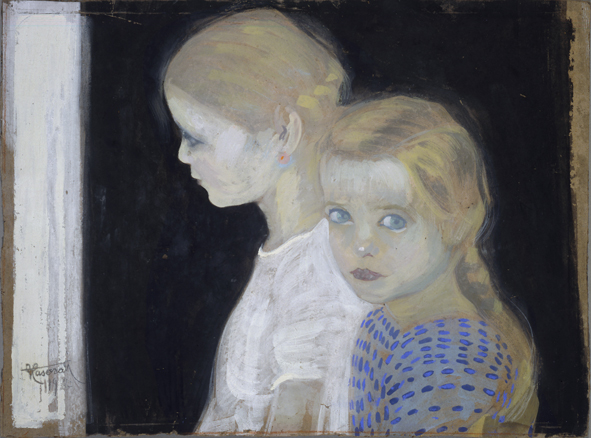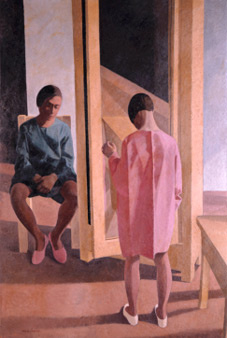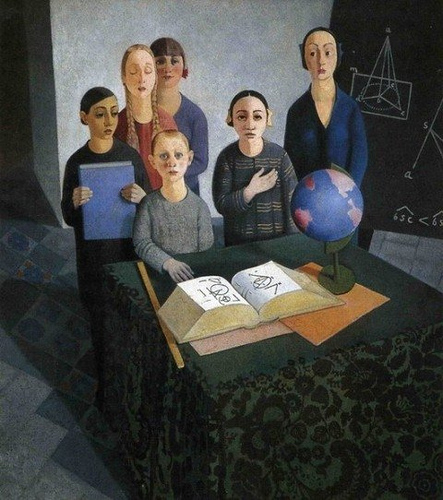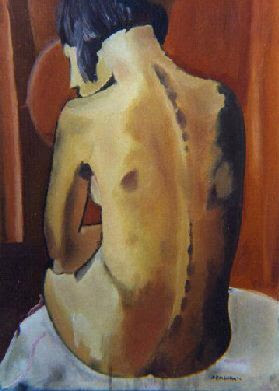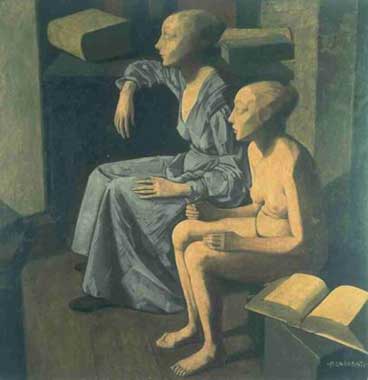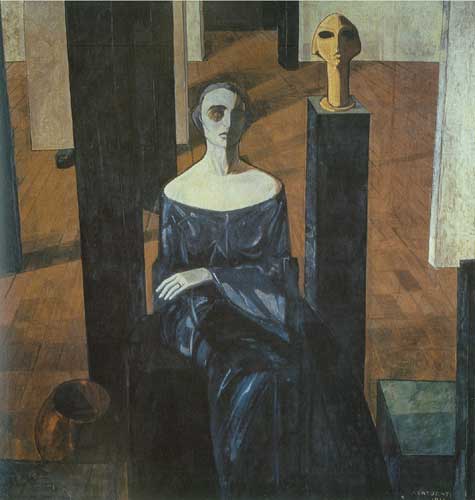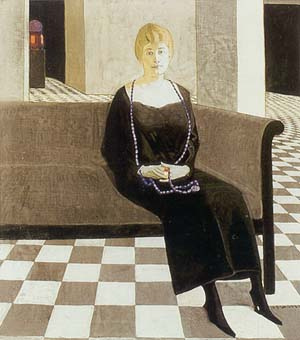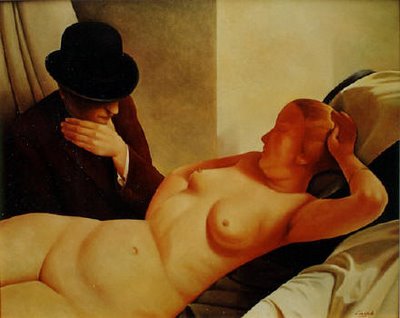<Back to Index>
- Painter Carlo Carrà, 1881
- Painter Felice Casorati, 1883
PAGE SPONSOR
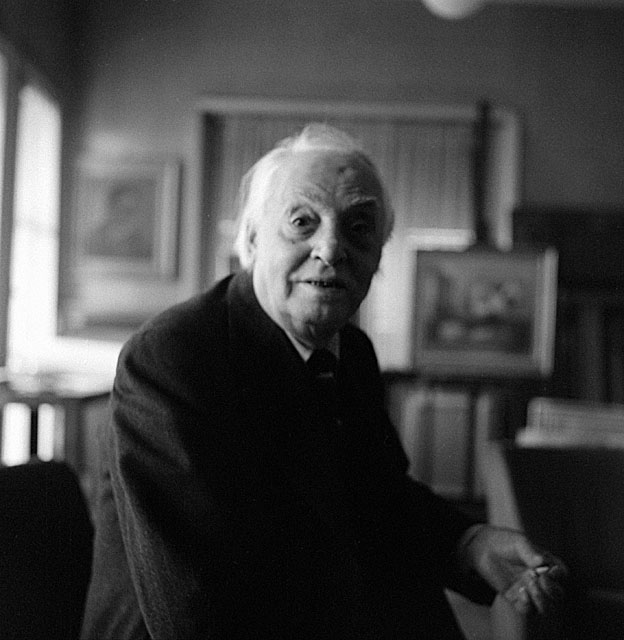
Carlo Carrà (February 11, 1881 – April 13, 1966) was an Italian painter, a leading figure of the Futurist movement that flourished in Italy during the beginning of the 20th century. In addition to his many paintings, he wrote a number of books concerning art. He taught for many years in the city of Milan.
Carrà was born in Quargnento, near Alessandria (Piedmont). At the age of 12 he left home in order to work as a mural decorator.
In 1899 - 1900, Carrà was in Paris decorating pavilions at the Exposition Universelle, where he became acquainted with contemporary French art. He then spent a few months in London in contact with exiled Italian anarchists, and returned to Milan in 1901. In 1906, he enrolled at Brera Academy (Accademia di Brera) in the city, and studied under Cesare Tallone. In 1910 he signed, along with Umberto Boccioni, Luigi Russolo and Filippo Tommaso Marinetti the Manifesto of Futurist Painters, and began a phase of painting that became his most popular and influential.
Carrà's Futurist phase ended around the time World War I began. His work, while still using some Futurist concepts, began to deal more clearly with form and stillness, rather than motion and feeling. Carrà soon began creating still lifes in a style he, along with Giorgio de Chirico, called "metaphysical painting". Throughout the 1920s and 1930s, the metaphysical phase gave way to a sombre style akin to Masaccio's. An example from this period is his 1928 Morning by the Sea.
He is best known for his 1911 futurist work, The Funeral of the Anarchist Galli. Carrà was indeed an anarchist as a young man but, along with many other Futurists, later held more reactionary political views, becoming ultra - nationalist and irredentist before and during the war, as well as by Fascism after 1918 (in the 1930s, Carrà signed a manifesto in which called for support of the state ideology through art). The Strapaese group he joined, founded by Giorgio Morandi, was strongly influenced by fascism and responded to the neo - classical guidelines which had been set by the regime after 1937 (but was opposed to the ideological drive towards strong centralism).
He died in Milan in 1966.
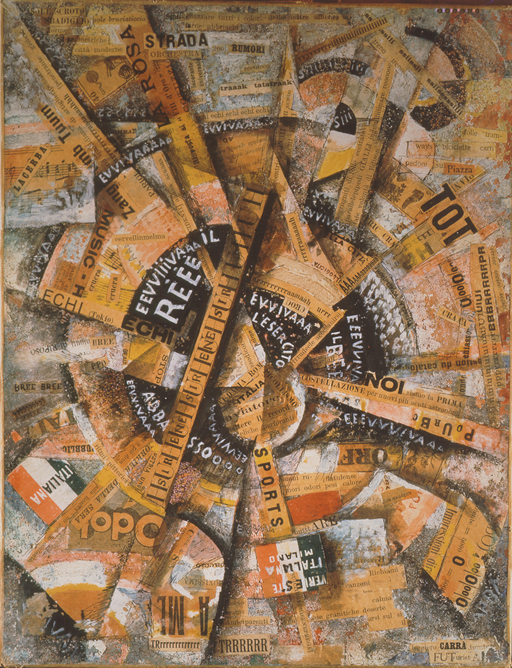
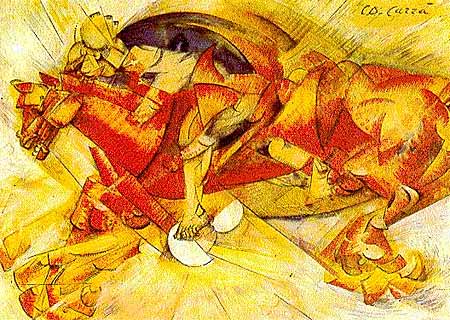
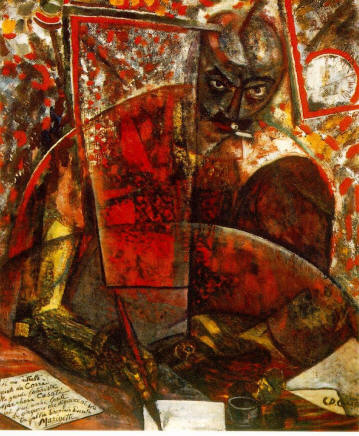
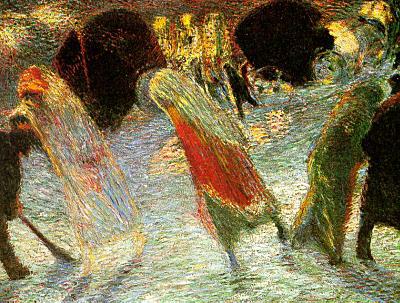
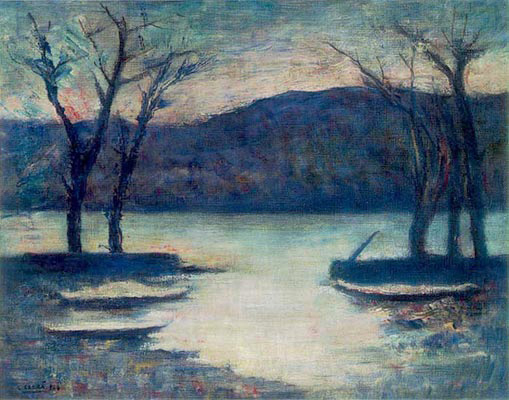
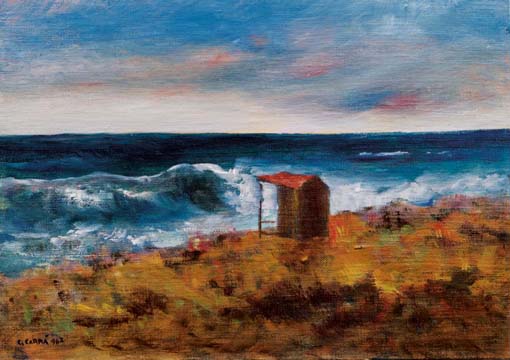
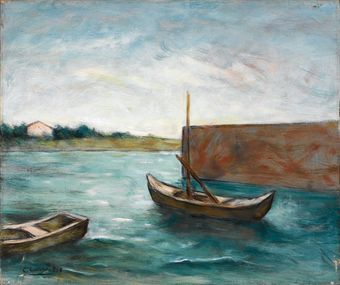
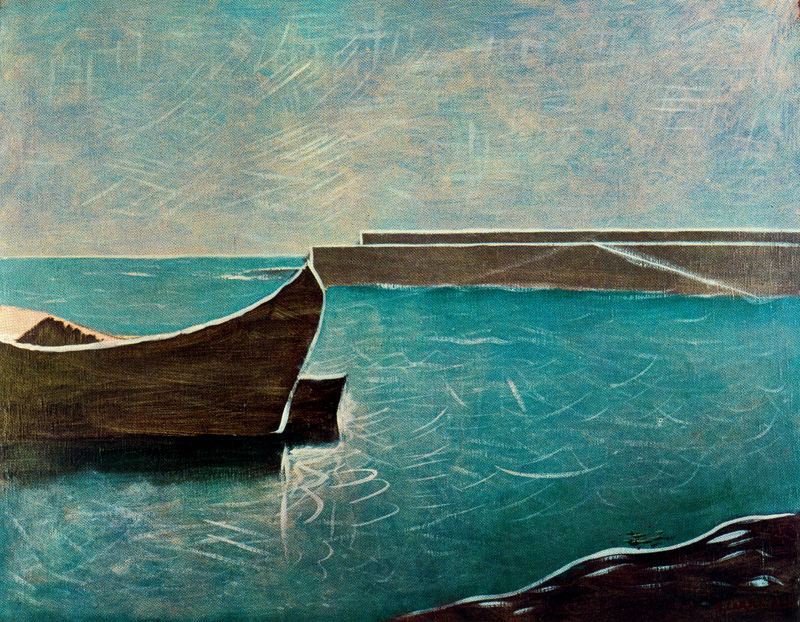
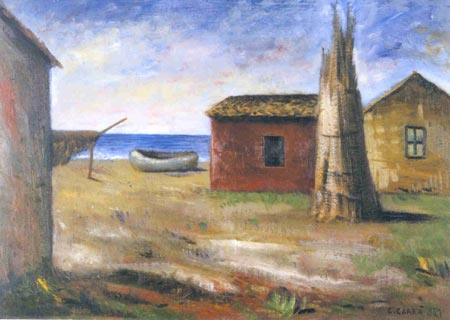
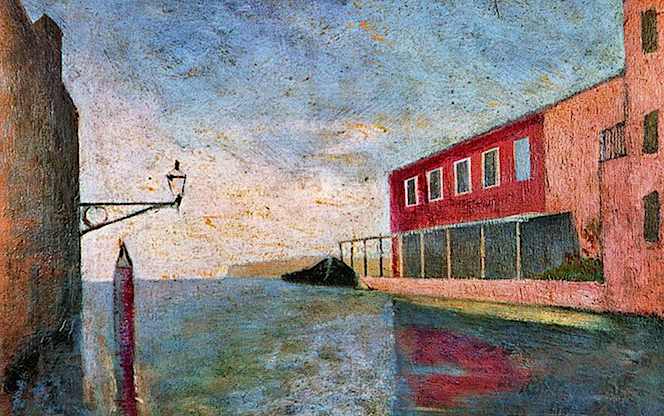
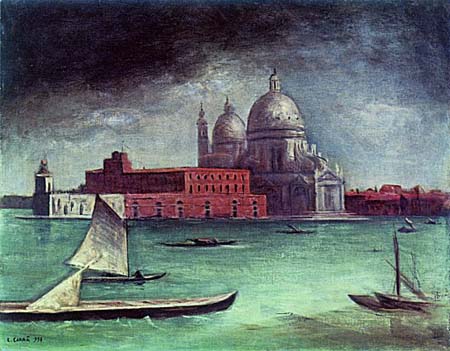
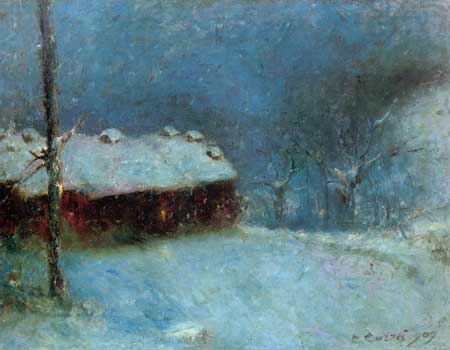
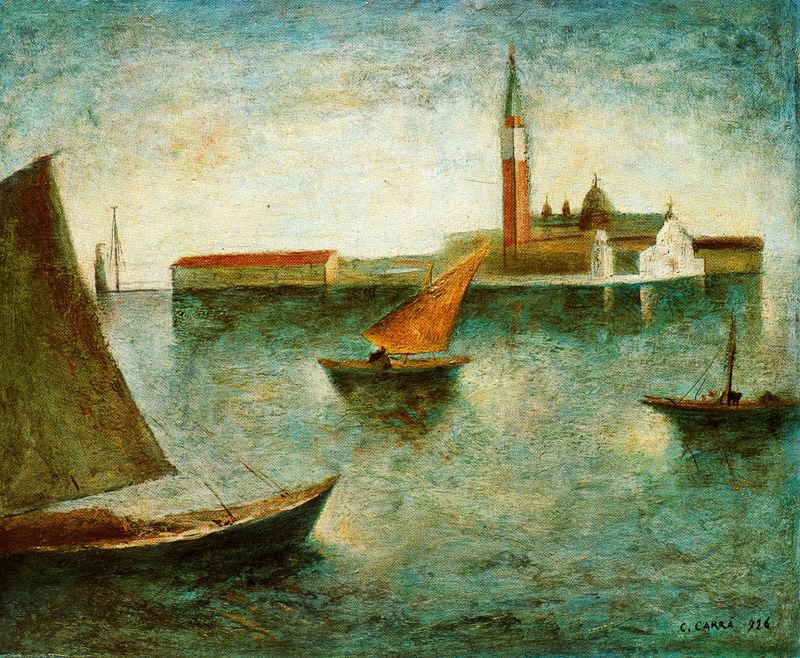
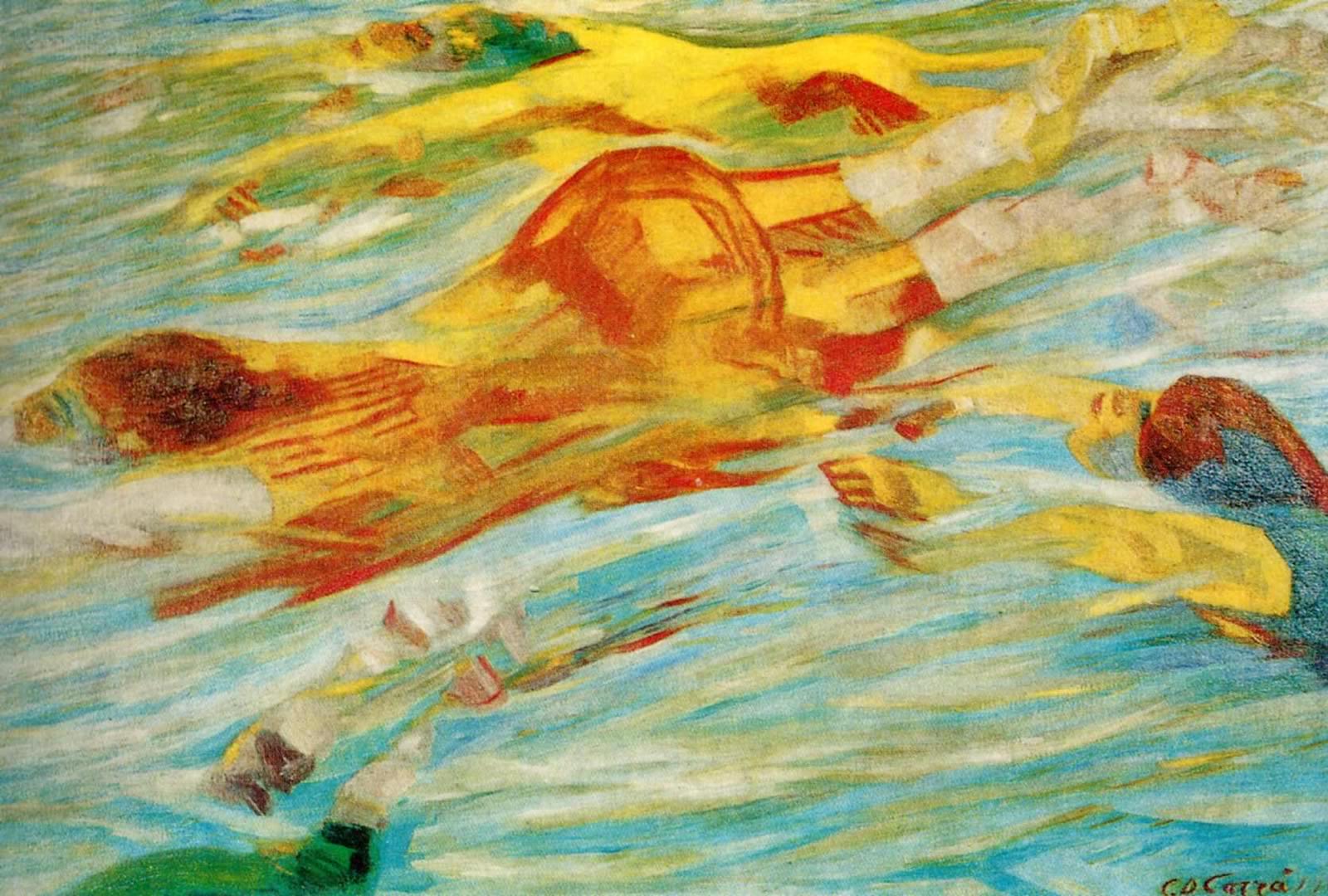
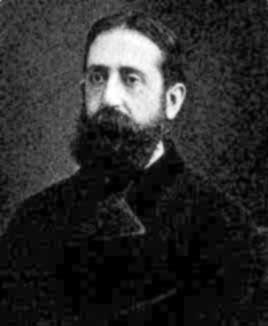
Felice Casorati (December 4, 1883 – March 1, 1963) was an Italian painter, sculptor, and printmaker. The paintings for which he is most noted include figure compositions, portraits and still lifes, which are often distinguished by unusual perspective effects.
Casorati was born in Novara. He showed an early passion for music, but abandoned his study of piano after a serious illness, and became interested in art. To please his mother he studied law at the University of Padua until 1906, but his ambition to be a painter was confirmed in 1907 when a painting of his was shown in the Venice Biennale. The works he produced in the early years of his career were naturalistic in style, but after 1910 the influence of the symbolists and particularly of Gustav Klimt turned him toward a more visionary approach. In 1915 he had a solo exhibition at the Rome Secession III, where he showed several paintings and the first of his sculptures in varnished terracotta. His military service in World War I began that year and lasted until his discharge from the army after the death of his father in 1917.
In 1918, "intrigued by the decadent atmosphere of Turin with its sinister views", he settled there with his mother and two sisters. His works of the next decade typify, in their emphasis on geometry and formal clarity, the "return to order" then prevalent in the arts as a reaction to the war. Although many critics found his work cold, cerebral and academic, Casorati achieved international recognition as a leading figure in this movement. Often working in tempera, Casorati drew inspiration from his study of Renaissance masters, especially Piero della Francesca, as in his 1922 portrait entitled Silvana Cenni. This symmetrical composition of a seated woman in a white dress is perhaps the best known of the artist's works. In it, the careful rendering of volumes results paradoxically in a sense of unreality which is characteristic of Casorati's art.
In 1925, Raffaello Giolli summarized the disconcerting aspects of Casorati's art — "The volumes have no weight in them, and the colors no body. Everything is fictitious: even the living lack all nervous vitality. The sun seems to be the moon ... nothing is fixed or definite" — and argued that these very qualities give his work its originality, and connect him to the metaphysical painters. Casorati himself wrote, in 1931: "In taking up, against me, the old polemic of classicism and romanticism, people rail against intellectualized and scholastic order, accuse my art of being insincere, and wilfully academic — in a word, of being neoclassical. ... since my art is born, so to speak, from within, and never has its source in changing "impressions", it is quite natural that ... static forms, and not the fluid images of passion, should be reflected in my works".
Briefly arrested in 1923 for his involvement with an anti - Fascist group, Casorati subsequently avoided antagonizing the regime. Beginning in 1923, he opened his studio to the young art students of Turin, and to emerging Italian artists such as Quinto Martini and "The Six Painters" group. One of his later students was the Italian painter Enrico Accatino. After 1930 the severity of Casorati's earlier style softened somewhat and his palette brightened. He continued to exhibit widely, winning many awards, including the First Prize at the Venice Biennale of 1938. He was also involved in stage design. He died in Turin in 1963.
Most of Casorati's important works are in Italian collections, public and private, including the Modern Art Revoltella Museum in Trieste and Galleria Nazionale d'Arte Moderna.
